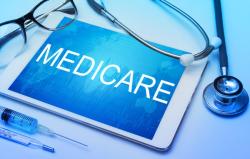© 2025 MJH Life Sciences™ and The Center for Biosimilars - Biosimilars, Health Economics & Insights. All rights reserved.
Study: Specialty Drug Spending Net of Rebates Soars for Private Insurance, Medicare Part D
This study of specialty drug spending looks beyond rebates to evaluate growth in spending from 2010 to 2017.
A new study of specialty drug spending charted the tremendous rise of this prescription category in just a short span of time. Authors of the study, published in Health Affairs, highlighted the growth of rebates and how these complicate the job of determining how much is actually being paid for these medicines.
They said biosimilars have “lowered spending,” although they ultimately may be less influential on pricing than generics have been, and both generics and biosimilars “may be less effective when new innovators enter the market and draw patients to newer brand-name drugs and away from [less costly drugs].”
From 2010 to 2017, spending net of rebates on retail specialty drugs tripled for Medicare Part D beneficiaries, more than doubled for people with private coverage, and grew only slowly for Medicaid beneficiaries, according to the study by economists with the Agency for Healthcare Research and Quality (AHRQ). Overall, from 2016 to 2017, specialty drugs made up 38% of net retail and mail-order prescription spending.
Rebates Complicate the Picture
Quantifying spending on specialty drugs is difficult, according to the authors, because of the complexity of rebates, whose use is hard to track and has grown rapidly in specialty drug medicine. ”Rebates are not part of the transactions that occur at pharmacies, are not reflected in typical data on spending, and are proprietary.”
Although there is no precise definition of specialty drugs, the authors used CMS guidelines to define retail specialty drugs in their study as having a median price greater than $600 over 2010 to 2016 and greater than $670 in 2017 for a 30-day supply.
The authors, from the Division of Research and Modeling of the Center for Financing, Access and Cost Trends at the AHRQ, used 2010-to-2017 data from the Medical Expenditure Panel Survey (MEPS) on spending on retail specialty drugs overall and in 3 payer categories: Medicare Part D, Medicaid, and private insurance. The MEPS data did not include provider-administered drugs, which “include most cancer medications and many injectable drugs that are more likely to be high-cost specialty drugs,” they wrote.”
Between 2010 to 2017, according to the authors, “specialty drugs accounted for a small, but significantly growing, share of retail drug fills and refills.” Specialty drugs increased as a percentage of total retail drug fills for patients in all 3 coverage categories and overall, from 1.0% to 2.3% of total retail drug fills.
The proportion of the insured population who obtained at least 1 specialty drug more than doubled overall from 2.2% to 5.0%. In 2016 to 2017, the percentage was more than twice as high among Medicare Part D beneficiaries (9.7%) compared with those with Medicaid (3.5%) or private insurance (4.5%). The authors suggested this could be due to a greater prevalence of the conditions treated by specialty drugs among people ages 65 and older.
Gross vs Net Spending
Average annual gross spending on retail specialty drugs more than doubled over the study period, as did net spending, from $49.6 billion to $112.6 billion. In the Medicare Part D population, net spending on retail specialty drugs increased from $11.3 billion to $35.4 billion, and in the privately insured population, from $24.6 billion to $57.6 billion.
In comparison, net spending for Medicaid beneficiaries appeared flat: $7.9 billion in 2010 to 2011 to $8.0 billion in 2016 to 2017. The authors cautioned these data were “imprecisely estimated,” but they said the trend, “in any case, is much lower than the tripling for Medicare Part D [212% increase] and the doubling for private insurance [134%increase].”
From 2010 to 2017, average annual rebates nearly quadrupled, from $11.5 billion to $44.7 billion, and increased from 19% to 28% of gross spending. In 2016 to 2017, rebates made up 30% of Medicare Part D gross spending, 24% of private insurance gross spending, and 53% of Medicaid gross spending on specialty drugs.
As a share of net spending for all retail drugs, net spending on retail specialty drugs more than doubled over the study period, reaching 31.5%, 37.8%, and 43.6% of total net spending for retail drugs for Medicare Part D, Medicaid, and private insurance, respectively.
The authors said their study “highlights the important role of rebates in retail specialty drug spending, especially for Medicaid.” Their data showed rebates made up half of gross Medicaid spending on retail specialty drugs. They noted that average net spending per fill did not increase during the study period, and therefore the growth in net spending was driven by an increase in use of retail specialty drugs.
They predicted spending on specialty drugs will continue to increase “as more innovative medicines that are likely to be classified as specialty drugs are predicted to reach the market during the next 5 years than in the past 5 years.”
Specialty drugs pose a challenge for payers trying to hold down spending rather than restrict access to the drugs. The authors suggested the best strategies for containing prices are to bring generics and biosimilars to the market more quickly, give Medicare the authority to negotiate lower prices, and increase price transparency for prescribers.
Reference
Hill SG, Milled GE, Ding Y. Net spending on retail specialty drugs grew rapidly, especially for private insurance and Medicare Part D. Health Aff (Millwood). 2020;39(11):1970-1976. doi:10.1377/hlthaff.2019.01830



